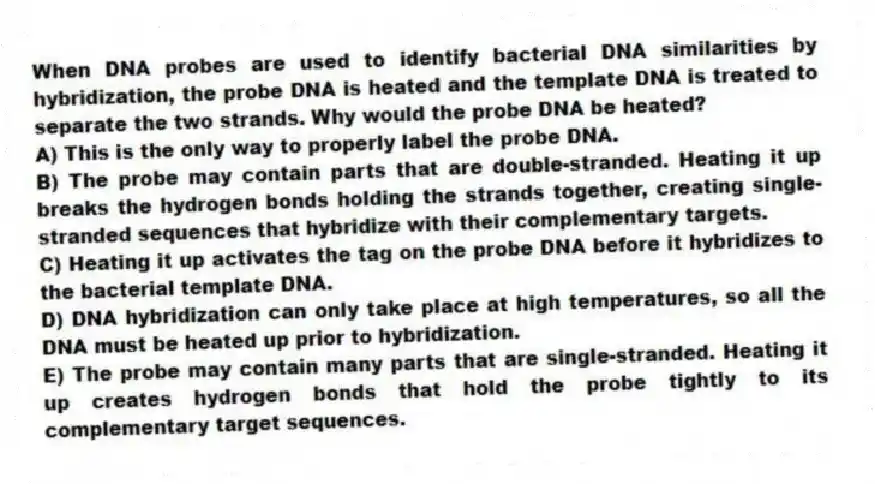
When DNA probes are used to identify bacterial DNA similarities by hybridization, the probe DNA is heated and the template DNA is treated to separate the two strands. Why would the probe DNA be heated?
A) This is the only way to properly label the probe DNA.
B) The probe may contain parts that are double-stranded. Heating it up breaks the hydrogen bonds holding the strands together, creating single-stranded sequences that hybridize with their complementary targets.
C) Heating it up activates the tag on the probe DNA before it hybridizes to the bacterial template DNA.
D) DNA hybridization can only take place at high temperatures, so all the DNA must be heated up prior to hybridization.
E) The probe may contain many parts that are single-stranded. Heating it up creates hydrogen bonds that hold the probe tightly to its complementary target sequences.
Correct Answer:
Verified
Q52: Explain the difference between a biotype and
Q53: Serratia marcescens are red when incubated at
Q54: Why might it be easier to identify
Q55: If each of two bacteria have a
Q56: Which statement regarding the Gram stain is
Q58: A DNA similarity of 75% between two
Q59: Horizontal DNA transfer may make it more
Q60: Disagreements between conclusions obtained from rRNA data
Q61: You have isolated a bacterium from a contaminated
Q62: Please select the False definition regarding microbial
Unlock this Answer For Free Now!
View this answer and more for free by performing one of the following actions

Scan the QR code to install the App and get 2 free unlocks

Unlock quizzes for free by uploading documents